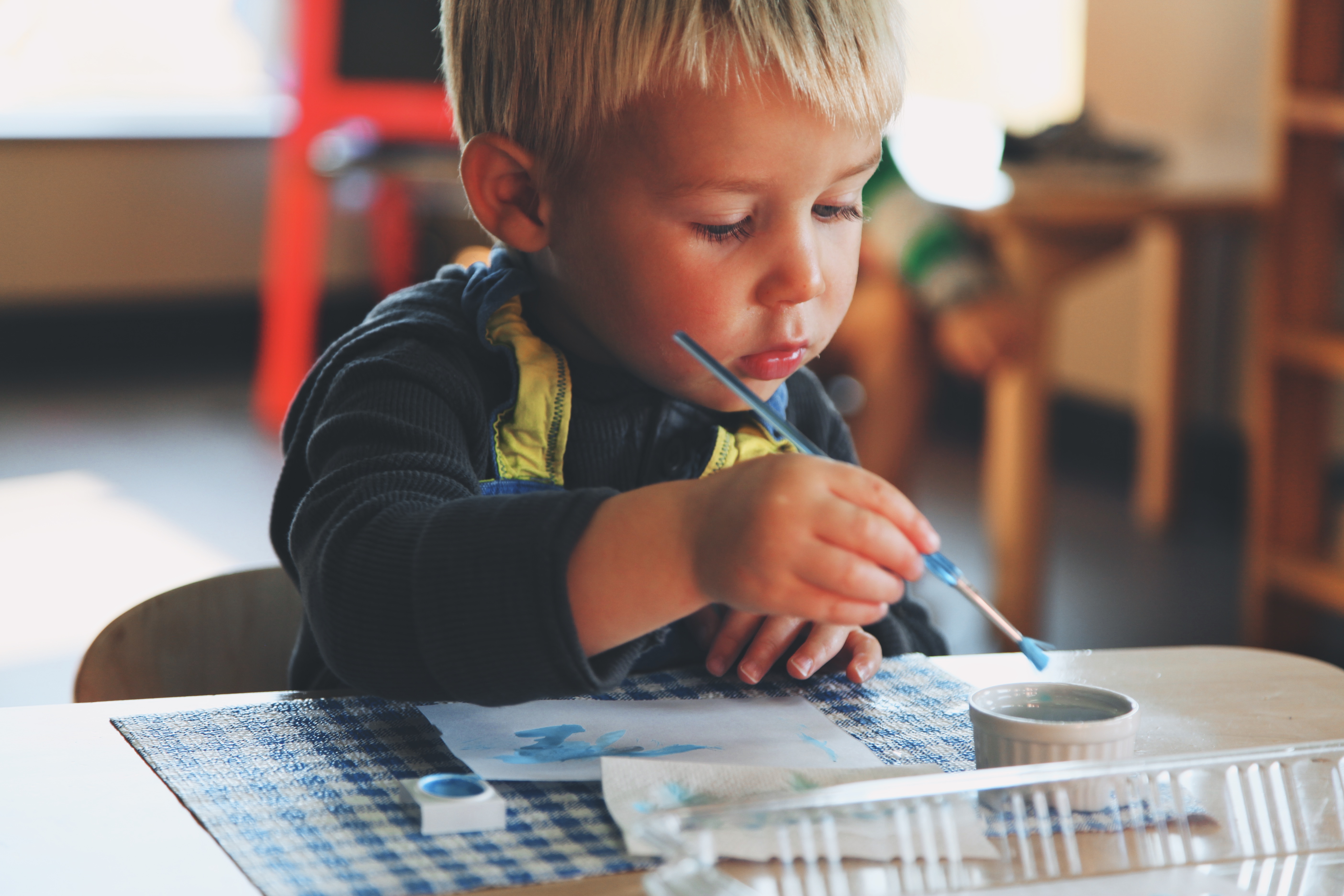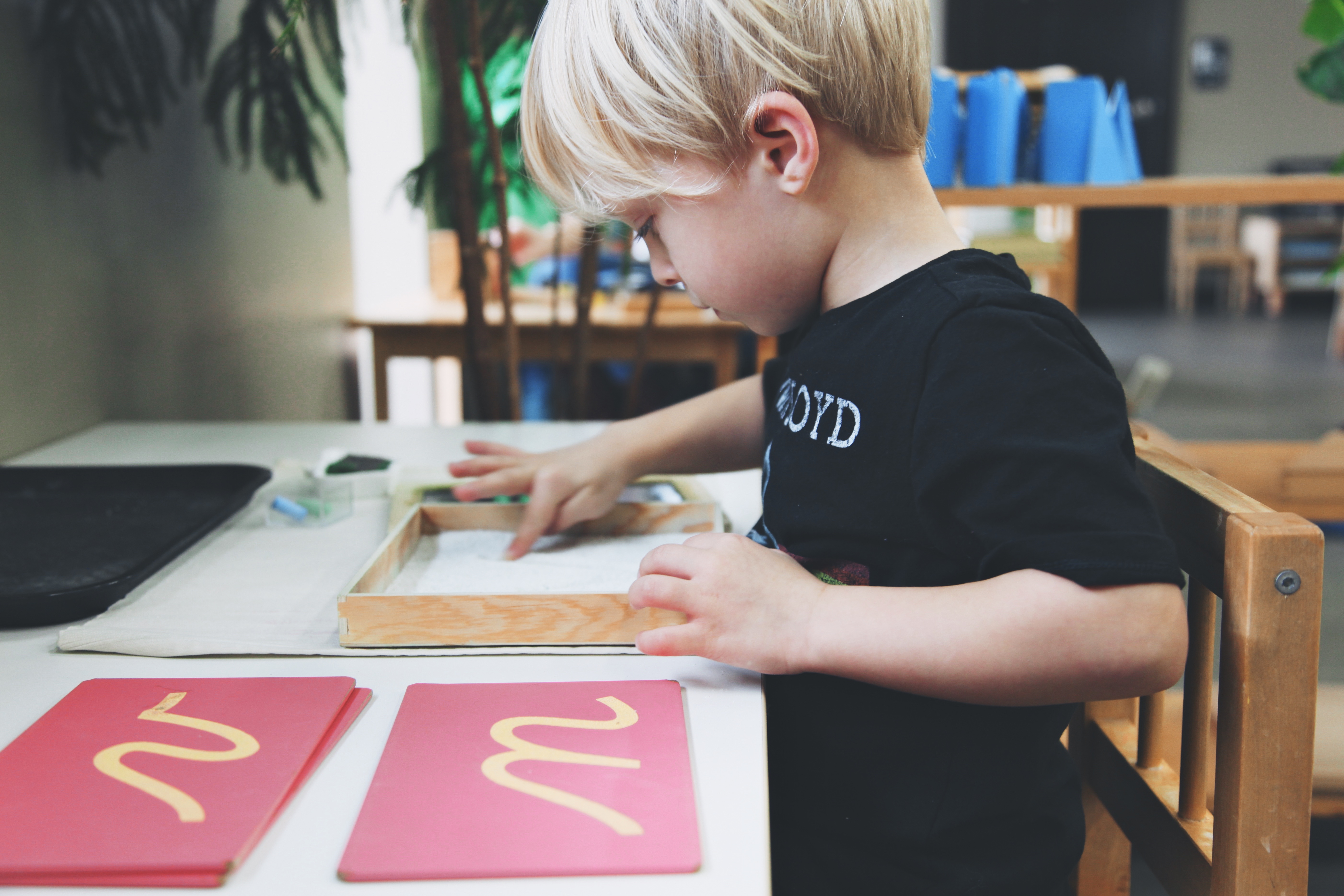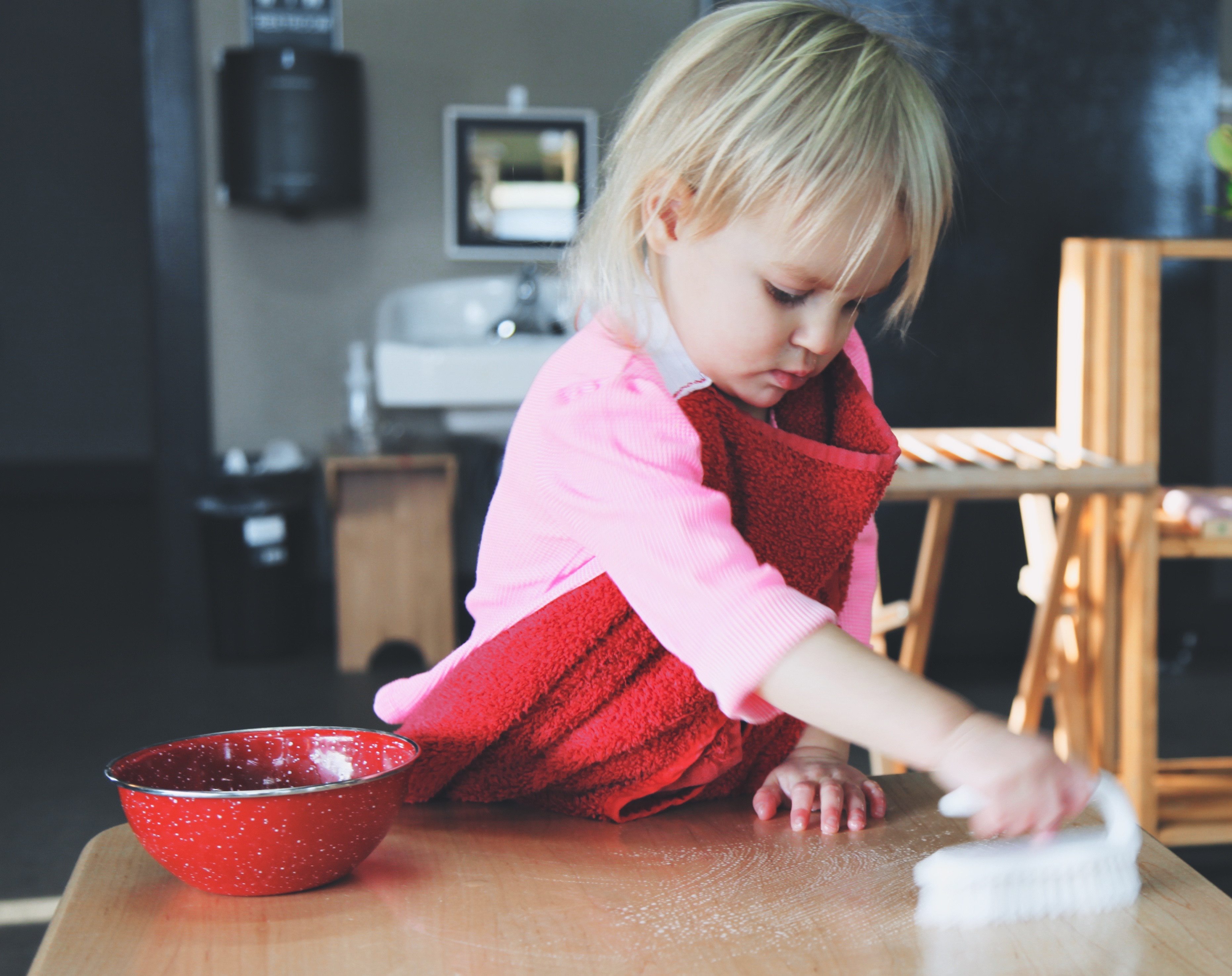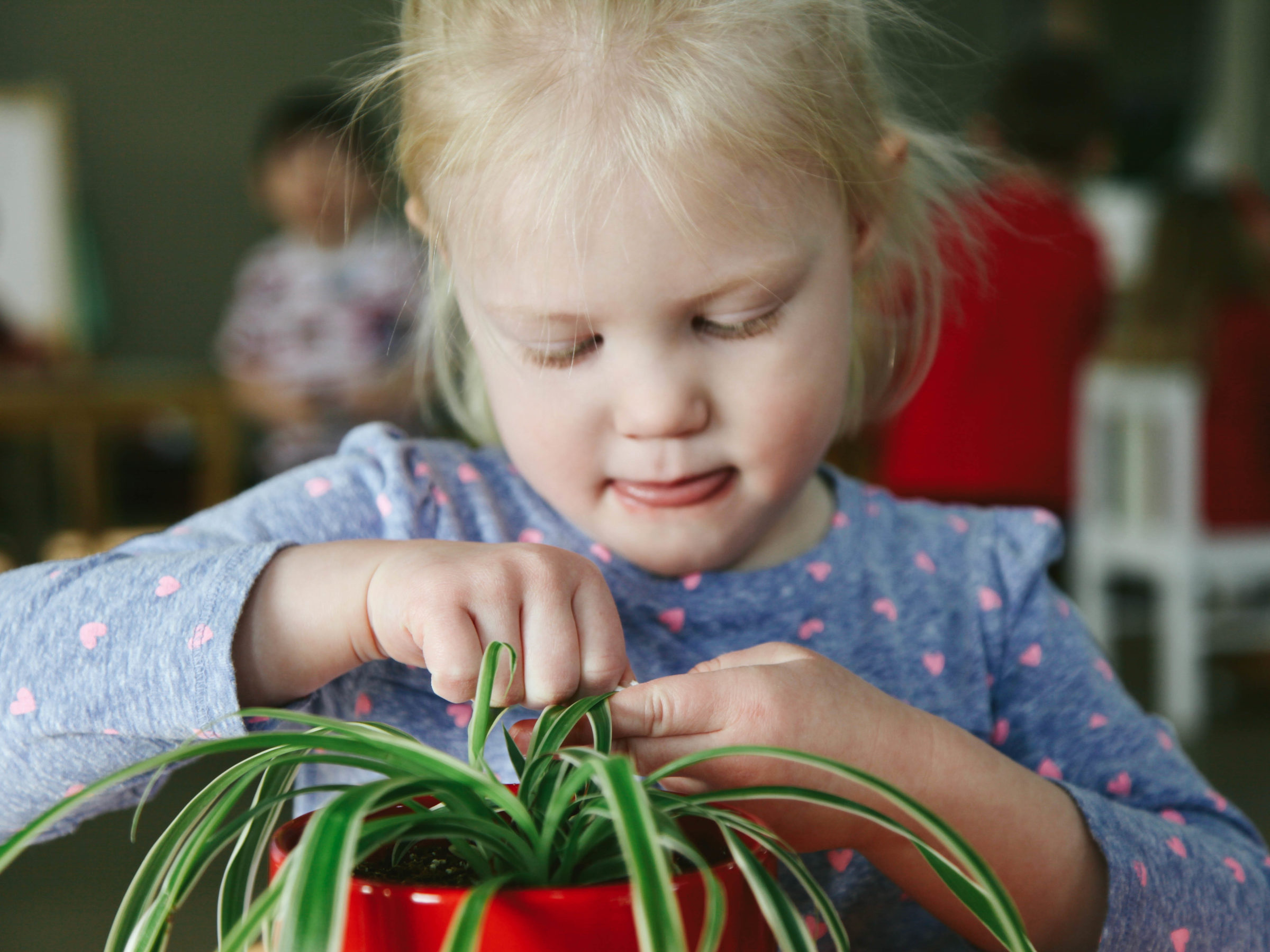Why Cursive
Montessori Activities
There are many unexpected moments in the way Montessori presents various concepts of skills to children, including the surprise of introducing children to handwriting first through cursive.
The Sandpaper Letters are iconic — pink or blue oversized cursive letters in rough sandpaper for a child to take to a table and practice tracing and pairing with a known phonetic sound. They’re oversized so it takes a child’s whole arm — shoulder to fingertip — to trace the sound. Handwriting isn’t just in the fingers and wrist. With this large dynamic movement, paired with tactile input from the sandpaper, the visual input from the symbol (the letter itself), and the auditory input from the phonetic sound this letter makes (mmmm as in mmmMom, not m as in the delicious brightly-colored candy) create a strong neural pathway for the child to attach this shape to the various words they know include this sound — math, monkey, music…
But why cursive?
Isn’t cursive outdated? Some of us have negative memories of cursive; as so often emerges in our memories of education and school, something we Have to do instead of something we Get or Want to do. Worksheets. Frustration with that Capital G.
So why do we introduce this not just At All, but First, and to such very young children? There are myriad reasons, and, as is frequently the case with Montessori philosophy and materials, they’re actually quite logical.
We rarely write by hand anymore, but when we do, it’s often some combination of cursive and print. The letters flow together because it’s easier and quicker. It is our unique Hand Writing. Cursive means “running,” and is simply quicker than picking up and putting down the pen for each letter.
Visually, in cursive, all the letters that compose one word are touching, the same way we say them. This can help when composing lists or moving to sentences, that different words need a bit of space between them, but that the letters in one word all touch.
This also helps when a child starts to move from writing to reading, as she’ll start to sound out those touching-letters, and might surprise herself when she says a word she recognizes. “That says ‘mom!’ I read!”
Big, circular, swirly movements are so natural for the young child, and something they’ve been refining since first coming into the classroom. Washing dishes and tables, polishing various artifacts, even painting and coloring, all come in loops and whorls and squiggles. This more naturally translates to cursive than print letters do. A child’s creative expression develops into stick figures, houses, and other identifiable images, but this is more of an Elementary stage than these earliest methods of expression. Concurrently, handwriting that matches these levels of development is helpful for young children.

In cursive, every letter starts on the left and ends on the right. It is very difficult to transpose letters or words, and much simpler to do so when writing in print. In fact, it’s not uncommon for children preferring to use their left hand to write away from their body the same way right-handed writers do, and end up transposing letters and words in the process. Cursive solves this problem.
The goal is to get a child comfortably using a writing implement. We start with crayons and paint brushes in art, scrubbing brushes in Practical Life, and grow into more precise, purposeful movement with materials like the Metal Insets, where a child carefully traces and fills in a geometric shape, exercising a great deal of self-control to not end up scribbling.
Cursive does this. For all the developmental reasons we’ve uncovered, cursive is a more available method of handwriting for the very young child than print is. And, once you’re writing, you’re off! Comfort with re-creating letter shapes using a pen or pencil isn’t limited to cursive; once you can write in cursive, it’s just nuance to change to print, or calligraphy, or Cyrillic, or Japanese characters, or Thai or Arabic script.
Writing is another language, another method of expression, and cursive helps children run.
Written by:
Charlotte Snyder







